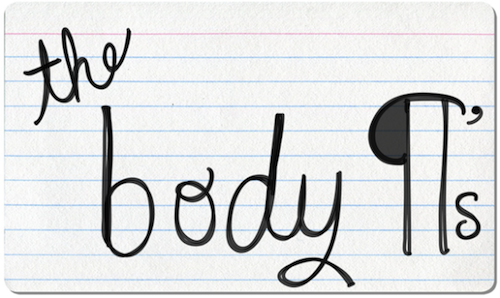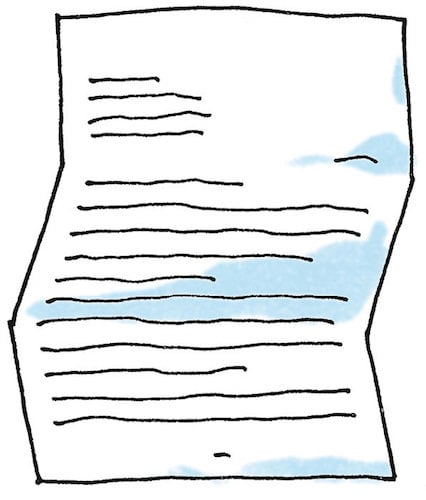
While the best recommendation letters are unique to each student, they all share certain key features that make them effective. This guide provides you with a structure to help you produce an outstanding letter of recommendation.
Not only will this recommendation letter template guide you through the writing process, it'll also assist you in determining whether you’re able to truly recommend a student for admission to college. Before outlining the steps, let’s consider what goes into a good letter of recommendation.
What Makes for a Good Letter of Recommendation?
The best recommendation letters are enthusiastic and highly positive about a student. They’re not just filled with compliments, though. They dive deeply to illuminate a student’s key intellectual and personal qualities. Additionally, these letters give specific examples to back up what they have to say.
Rather than tell admissions committees everything they could ever want to know about a student, strong rec letters are focused on a specific narrative. You don't have to cover a broad range of qualities, but rather you can focus in on the most significant ones, especially as they relate to your relationship with the student.
You should start every recommendation letter by brainstorming the qualities you wish to highlight and examples you want to give. If you find you haven’t come up with much that’s positive or personal, then you might ultimately decide that you’re not the best person to write that student a recommendation letter for college.
Let’s look more closely at this first stage in the rec letter writing process: brainstorming.

The Brainstorming Stage
There are a few main considerations in the brainstorming stage. First, how do you feel about recommending the student and why? Second, what key qualities do you intend to communicate in your letter? And third, what stories can you share to illustrate your points? Read on to consider each of these thoughts individually.
How Do You Feel About the Student?
Before delving into specifics, you should pause here and ask yourself how you feel about recommending the student. Are you able to genuinely provide a positive endorsement? If you feel relatively neutral, do you need more information from the student? In the case that you feel negatively towards a student, you may suggest that she ask another teacher to provide her with a letter.
A lukewarm or negative letter would not be useful, or could even hurt, the student’s application. Admissions officers have a discerning eye when it comes to reading letters. They’ll be able to tell if you wrote your letter with reservations.
If this is how you feel, then you may have to do the difficult thing and inform the student that you’re unable to provide a recommendation letter. If the student still wants you to fulfill the requirement, she should know that your letter may not do much to boost her chances of admission.
In all three cases, you should root out the reasons behind your evaluation of the student. What qualities of the student have stood out to you?
What Qualities Do You Plan to Highlight?
Considering the features mentioned above, what intellectual and personal qualities of the student have you noticed or been impressed by?
Intellectual qualities you could highlight include problem-solving skills, analysis, curiosity, creativity, communication, collaboration, and foreign language skills. Some personal qualities you could emphasize might be strength of character, honesty, integrity, courage, humor, thoughtfulness, maturity, cultural awareness, and compassion for others.
Once you’ve narrowed down the key qualities you want to present, you can think about stories and examples.
What Anecdotes Can You Share?
After considering what qualities you plan to highlight, you should think about what specific anecdotes you can share to illustrate your assessment and help the student come alive in the eyes of the reader.
These stories can be based on your interactions with and observations of the student. They may also be informed by the student herself, through discussions and her “brag sheet.” The student should provide you with her thoughts on her goals and significant experiences that have shaped who she is today. These reflections can be helpful reminders, but ideally you also know the student well enough to write an insightful letter based on your familiarity with her academic work and personal character.
Some potential anecdotes include times when the student you're writing the letter for showed exceptional intelligence, compassion, motivation, tenacity, leadership skills, and/or teamwork abilities. Once you’ve come up with a list of what you want to focus on and how to back up your evaluation, you can begin to draft.

The Drafting Stage
After brainstorming, you can start to shape your thoughts into the typical structure for a recommendation letter. It's usually a full page consisting of four paragraphs: the introduction, body paragraph 1, body paragraph 2, and conclusion.
Let's look at what should be included in each paragraph, and how a teacher and counselor might write their first body paragraphs with different ideas in mind. You can choose to start your letter as creatively as you wish, but all introductions should include certain key information, as you'll see in the next section.
Introduction
What does the reader want to know when she starts reading your letter? One, she wants to know who the letter is about. Just as importantly, she wants to know who you are, along with what makes you qualified to assess this student.
Logistically, you should answer the latter question by providing your name, school, and contact information in official letterhead at the top. In your introduction, furthermore, you should explicitly state who you are and how you know the student. If you’ve taught the student in more than one class or gotten to know her in other contexts, like as the advisor of a club, then you should include that as well. The better you know the student, the more weight your recommendation carries.
Here are a couple examples for starting out your recommendation.
Example 1
To Whom It May Concern,
It is my pleasure to recommend Judy, whom I taught in my 11th grade honors English program.
Example 2
Dear Admissions Committee,
I am delighted to recommend the multi-talented Eduardo for admission to your undergraduate program. As Eduardo’s 11th grade music teacher, as well as his chorus leader throughout all four years of high school, I've watched him grow into an outstanding and dedicated musician.
Your entire introduction should be three to five sentences. After stating who the recommendation is for, who you are, and how you know the student, you may add about two sentences describing the student and introducing what’s to come. If you’re customizing your letter to a specific program or college, then you’ll mention that here too.
Once you’ve introduced the student and yourself, you’ll move onto the first body paragraph. If you’re a teacher, you may focus on the student’s intellectual qualities and academic work. If you’re a counselor, you may speak more to a student’s growth throughout high school and role in the school community. Let’s start out by considering the first body paragraph that a teacher might draft.

Body Paragraph 1 (Teacher)
Your first body paragraph should consist of four to six sentences. As a teacher, you may use this paragraph to hone in on the student’s key academic strengths and interests. In your brainstorming, you should have come up with the main qualities you want to describe, along with a meaningful anecdote to back up what you’re saying.
Make sure to use enthusiastic and vivid language that will make the letter interesting and memorable to an admissions officer, who might be reading through hundreds of teacher rec letters. If the student especially impressed you, you might use a statement of high ranking, calling her, for example, one of the best students you’ve taught.
This example uses a statement of high ranking and will go on to focus on Bella’s writing talent.
Bella is one of the most talented writers I’ve had the pleasure of teaching in my ten years at Forks High School. She demonstrates a nuanced understanding of literature and is comfortable within spaces of ambiguity and interpretation. She produced a particularly thought-provoking thesis paper on spirituality in Native American literature...
This second example focuses more on Dave’s strong interest in the subject of computer science.
Dave has developed an avid interest in computer science. Not only was he an excellent student throughout the year, but he also worked on developing an app that would use a school-wide crowdsourcing strategy to clean up the school grounds…
As mentioned above, a teacher will draw on her experience with the student from class. A counselor, on the other hand, may speak more clearly on a student’s development over the years and/or participation in the greater community.
Body Paragraph 1 (Counselor)
While a teacher interacts with a student every day in the classroom, a counselor has a different relationship with the student. Rather than speaking to their work as a student, the counselor may talk about the student’s maturity, development, community service, and interactions with other students and faculty.
As with a teacher recommendation, a counselor recommendation should hone in on a few specific qualities and give an insightful example. In the following examples, the counselor touches on one student’s school leadership and on the other's growth throughout high school.
Example 1
Rory brings an infectious energy and enthusiasm to her fellow students and teachers. As Class President, she organized fundraisers and events that both raised money for class projects and were enjoyed by all. Last spring, she set up McKinley High’s version of The Sing Off, complete with spinning chairs for the judges to scoop up contestants for their teams. The entire performance was recorded and is available on our new YouTube channel, which Rory and her fellow student council members set up and have added to throughout the year.
Example 2
Michael has impressed all of us at Washington High School with the incredible progress he’s made over his four years. While he arrived in 9th grade with limited English, he’s grown his language abilities in leaps and bounds. Now he actively participates in his classes and contributes to the school newspaper. His latest article on college planning for ELL students, in which he shares his personal story and family background, has been shared among faculty and counselors here at the school.
While the teacher and counselor may start out their recommendations by focusing on different aspects of the student, their second body paragraph may share more similarities. Here you might discuss the student’s impressive personal qualities.

Body Paragraph 2
In the second body paragraph, you might focus on revealing the student’s personal strengths and personality. You could talk about traits like integrity, honesty, compassion, courage, and resilience, to name a few.
Admissions officers want to know if the student has overcome any particular challenges in life, or if there are any special family circumstances that have affected the student. Apart from shedding light on the student’s personal journey, you also want to consider how you can add to her application. What has she already shared, and how can you both complement and add to her story?
Whatever you choose to share, it should be something that you can speak in some depth about. In the following example, the recommender speaks about Jamie’s strong value of integrity.
Not only is Jamie an outstanding history student, but he also displays exceptional strength of character. When you speak to any of his teachers about Jamie, the first word that comes up is "integrity." He’s an honest and caring young person committed to upholding these values in our school community. When administrators revised the school handbook last year, Jamie volunteered to review and give input into the section on academic integrity and plagiarism. He helped promote the ideas throughout the school and stayed after for discussion groups on what leads students to turn to cheating.
Once you have two strong body paragraphs, you’ll finish your letter with a succinct and memorable conclusion.
Conclusion
In the conclusion of your letter, you should reiterate your support for the student’s application to the college or program. You can add a concluding statement of her strengths and assets, making sure to reinforce the points you made above while still adding fresh language.
On top of this, your conclusion may offer a vision of how the student will perform in the future, both in terms of personal achievement and contributions to her college community. Finally, finish up by inviting admissions officers to contact you for any further information. Most letters end with the salutation of “Sincerely,” followed by your name, position, and school.
Outside of this overall four-paragraph structure, there are a few formatting points to keep in mind.

Format of Your Recommendation Letter
Your recommendation should be a full page in length. Any less may look that you didn’t have much to say about the student. Any more is unusual and not necessary apart from exceptional circumstances.
Use official school letterhead and include all the necessary contact information described above. Ultimately, you’ll upload your letter to the Common Application or a college’s individual application portal.
In closing, let’s review the structure to follow when brainstorming, drafting, and revising your recommendation letter.
Following the Recommendation Letter Template
As you brainstorm exactly what you want to communicate in your letter, keep in mind how you can structure your thoughts according to the recommendation letter template described above. To review, let's go over the key elements you should include:
- Introduction: Here, you'll state your support for the student, describe how you know the student, and touch on her key strengths and achievements.
- Body Paragraph 1: In your first body paragraph, you may speak about a student's academic strengths and interests, along with an anecdote to back up your assessment. If you're a counselor, you may focus more on the student's community involvement in this first body paragraph.
- Body Paragraph 2: In the second body paragraph, you can reveal the student's impressive personal qualities, ones that admissions officers may not know about from the rest of her application. Make sure to include a meaningful example to back up your assessment.
- Conclusion: Restate your support of the student, and provide a vision of her future success. Invite admissions officers to contact you with any questions.
While letters will vary in terms of writing style and emphasis, the best ones will include these key elements. To write an effective letter, as well as to make sure that you can genuinely recommend a student, you should take the time to plan and map out your letter according to this template.
You can include meaningful anecdotes based on your interactions with the students and discussions with her about her college plans and application strategy. By gathering thoughts from the student herself and informing yourself about how to structure your rec letter, you'll be poised to write a memorable letter that will both impress admissions officers and help them get to know the student better. Your letter can reveal meaningful insight into the student's academic and personal strengths and thereby make a significant impact in improving her chances of admission to college.
What's Next?
Now that you've learned about a template you can use to structure your recommendation letter, check out these sample recommendation letters. Here you can read 4 great teacher recommendation letters, plus 3 examples of bad teacher recs.
Beyond this structure, what else do you need to know about writing a letter of recommendation? This complete guide discusses how to write a strong letter of recommendation, from how to choose powerful language to the common traps to avoid.
Are you a counselor writing a letter of recommendation? Check out our guide that includes three excellent examples of counselor letters of rec to give you some ideas.












